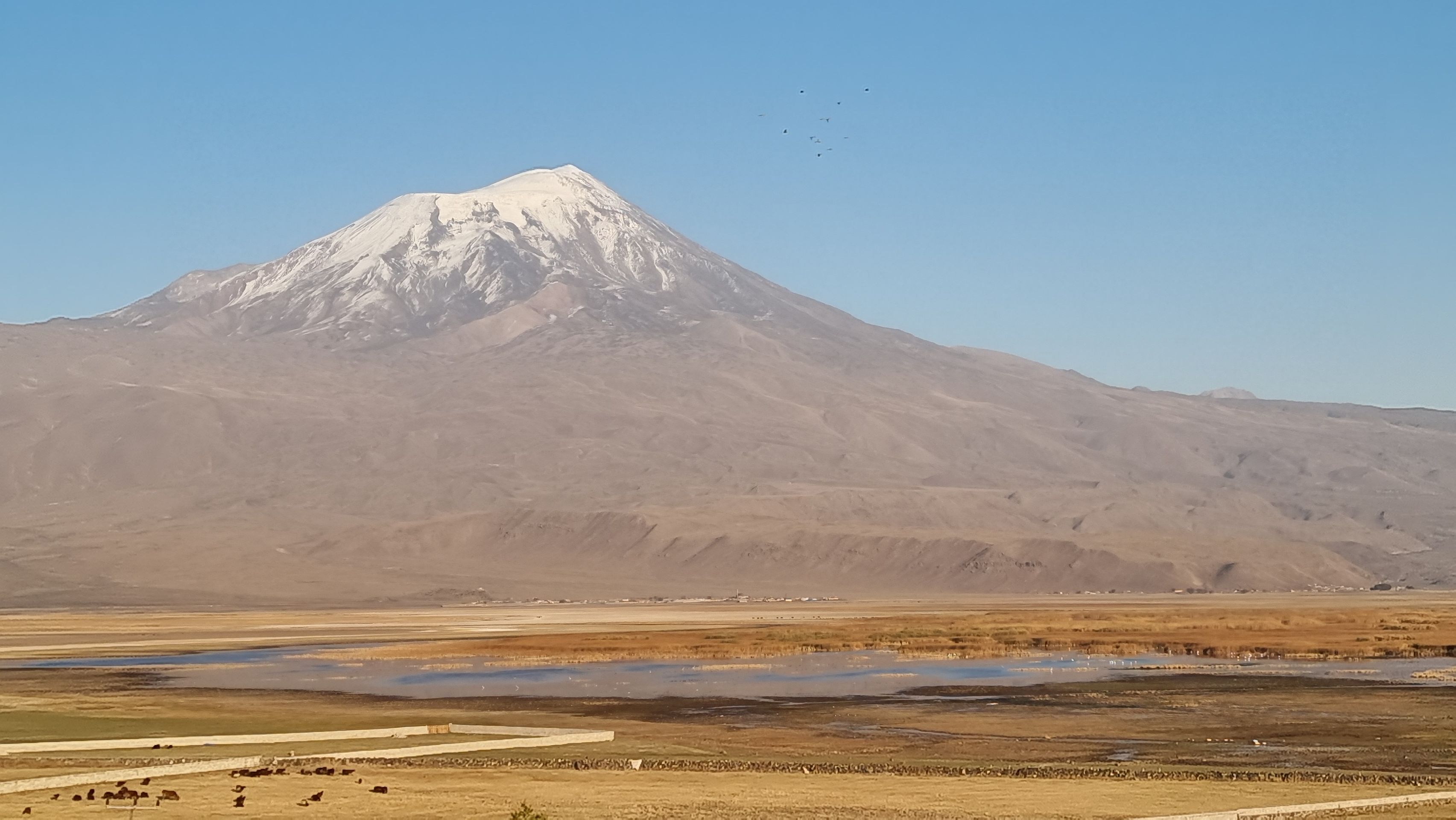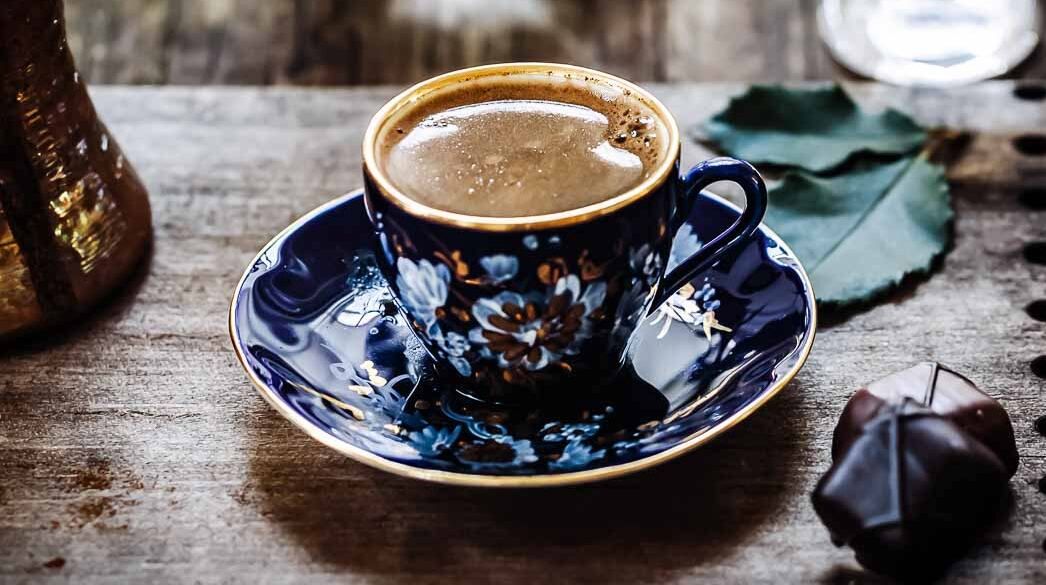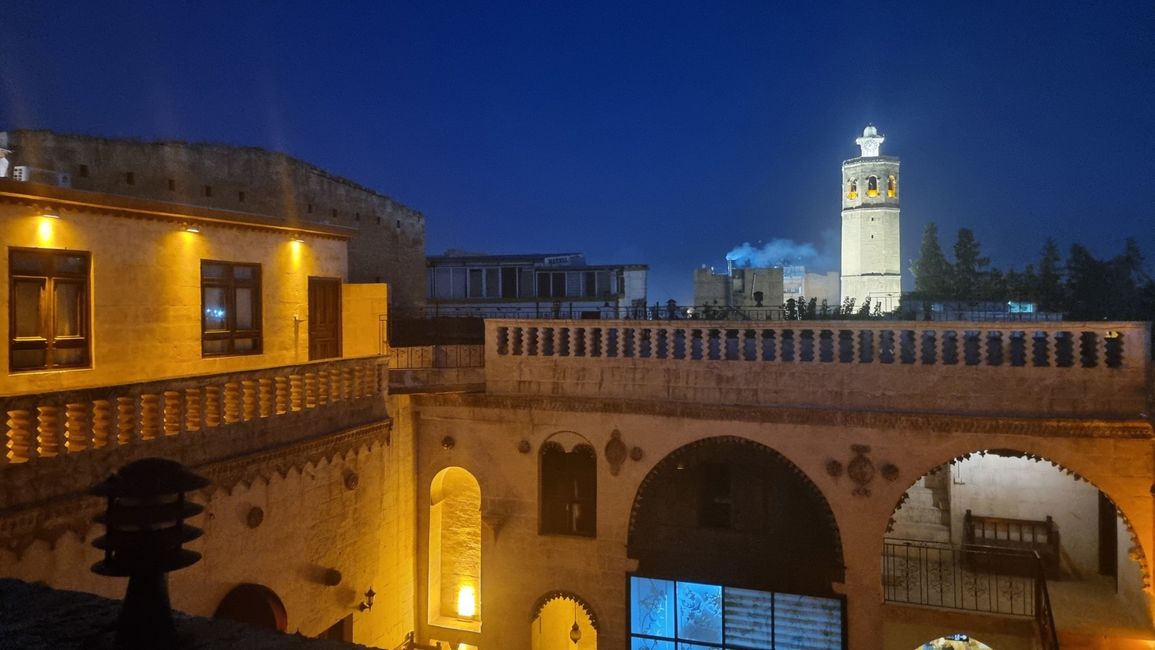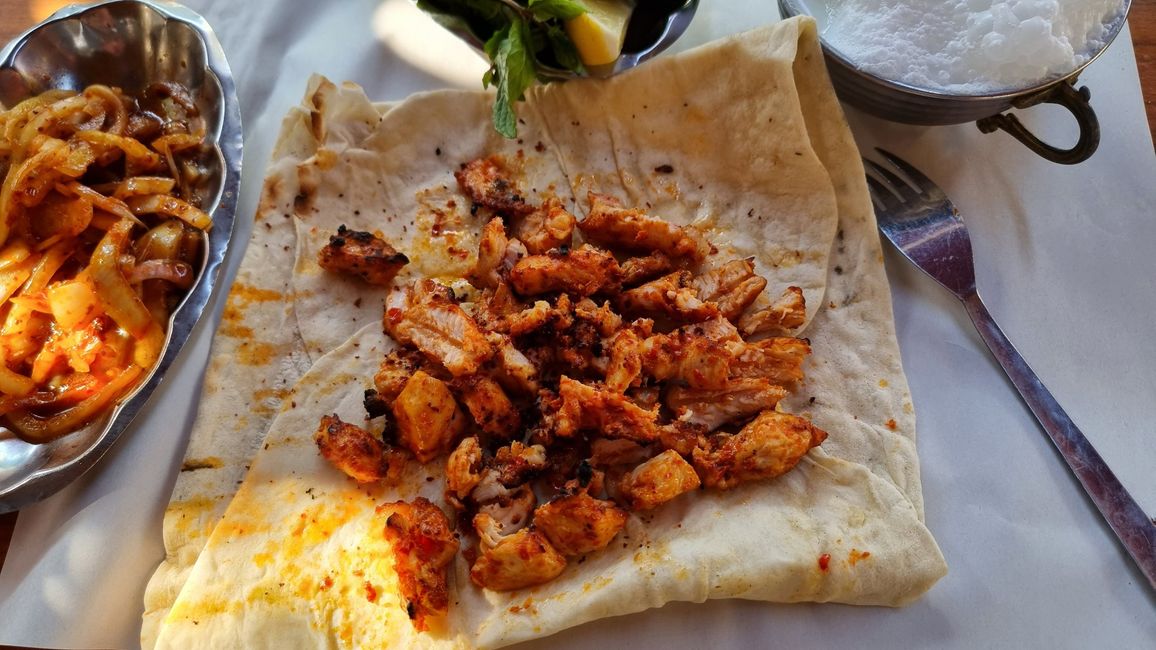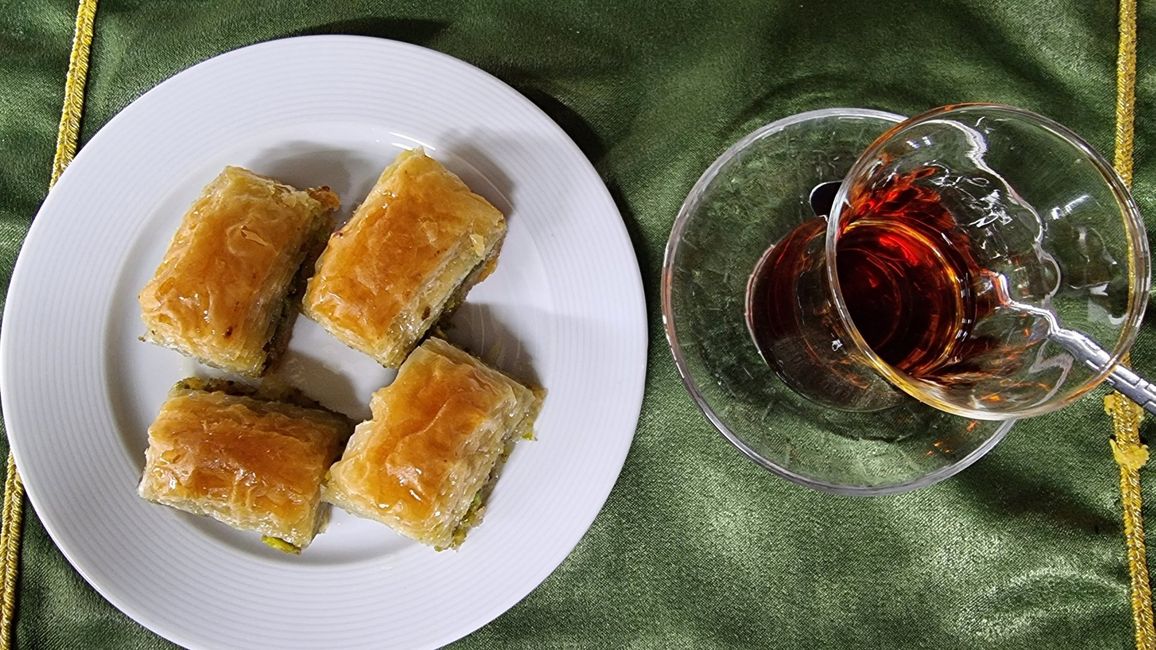Day 20 - Don Curry on Abraham's Trail
Objavljeno: 22.10.2021
In the previous part of the journey, Don Curry encountered numerous traces of New Testament celebrities: be it Mary's house near Ephesus, the tomb of the apostle John in Selcuk, the grave of his colleague Philip in Hierapolis, the birthplace of Paul in Tarsus, and of course the Peter's Church in Antakya. Don Curry has now reached eastern Anatolia, and here many things feel different. The New Testament doesn't play a role here, but the Old Testament does...
But first Don Curry finally left the Mount of the Gods and headed south. He skipped breakfast today to catch up on some sleep. He also assumed that he would reach his destination by noon and be able to strengthen himself there. Shortly before this goal, there was a detour on the day's schedule. A visit to Göbekli Tepe - another excavation mound from ancient times. But once again, Don Curry could be surprised.
The well-thought-out visitor guidance system was already surprising. A large and very well-filled parking lot was right next to the visitor center, which, like all buildings, was circular in shape. From there, Don Curry only had to walk a few steps to the introduction pavilion, which provided a brief insight into the history of the finds in Göbekli Tepe; there was also a short film with intriguing information, but even more impressive was a musically illustrated multimedia show that expressed the emergence of spirituality and culture without words. Because that's exactly what Göbekli Tepe can be: the oldest place of spirituality built by humans, the first temple. And the people back then didn't do things halfway, they went all out.
After leaving the circular pavilion, visitors walk along a covered path to the bus stop, where they can then be transported to the actual excavation site by a minibus for 800 meters. Under a huge roof, you can see them: four circular sacred buildings have been excavated so far, each 10,000 to 11,000 years old - and thus many millennia before the pyramids or Stonehenge. But similar to Stonehenge, massive monoliths played an important role. They are up to 6 meters high and all designed in the shape of the letter 'T' - like a person with outstretched arms. But it's not just their size that amazes, many of the monoliths are adorned with amazingly lifelike reliefs of various animals. The excavations of Göbekli Tepe, which only began 25 years ago, are already challenging many alleged certainties of early human cultural history. For Don Curry, this literal glimpse into a very distant time was one of the most exciting and important experiences of the journey so far.
By 1:00 pm, he had already reached the destination of the day, struggling through the narrow streets of the old town of Sanliurfa, finding his hotel immediately and parking his car right next to it in a car park. This was one of the advantages of the Palmyra Boutique Hotel, that it could offer free parking right in the middle of the old town. The other advantage: the hotel is located in a typical Urfa house, of which there are still several in the old town. From the outside, these houses appear rather rough and unwelcoming with their plain facades, but once you enter the entrance area, you inevitably end up in a small idyllic courtyard, from which the rooms can be reached via several stairs. With a total of 6 rooms, the hotel had a very familiar atmosphere and Don Curry was greeted very warmly. Unfortunately, his room was not quite ready yet, but he could leave his luggage there, asked for a tip for a good lunch spot, and plunged into the old town.
He quickly realized that Sanliurfa is noticeably different from all the other Turkish cities he had visited so far; it is distinctly more oriental. Everything behaves a bit louder, a bit more chaotic, and a bit more indecipherable than he was used to. Before he could even reach the restaurant tip in the middle of the bazaar area, he fell victim to somewhat gangster-like waiters. He got too close to the tables of a street restaurant and was immediately urged to sit down by the young men. Don Curry didn't have any high demands for his lunch, so he submitted to his imposed fate. When he asked for a menu, the young waiter in charge simply listed: 'Chicken, Lamb, Meatballs, ...' Don Curry was fine with chicken. He also ordered Ayran and water, he didn't need to specify more. Immediately, he was served a bottle of water and a tin cup full of foaming Ayran, as well as a bowl of chili paste and a bowl of very garlic-heavy Tzatziki, then a bowl of pickled onions in brown sauce and a plate of raw onions and lots of parsley. Surprisingly, the bread was missing, which is usually the first thing that comes to the table. It came as a thin flatbread under the grilled chicken pieces. Don Curry was supposed to roll his own durum by combining the meat, onions, parsley, and all the other things, the Turkish wrap. At least that's what the neighbors at the other tables did. He himself preferred to use a fork and eat his chicken in a conventional way, surprised by the fantastic seasoning of the delicious meat. He consumed the side dishes as well, although he could do very well without the spicy chili paste. The meal cost 2.30 € and filled his stomach. Meanwhile, his room could be occupied, but it was rather disappointing. Due to the beautiful courtyard, he had expected more oriental ambiance in the room as well. But of course, life in the Urfa houses did not take place in the rooms but in the courtyard.
Without lingering, Don Curry returned to the old town, first visited the venerable Ulu Cami, which has taken the place of a Byzantine Stephanus Basilica. The minaret uses the old church tower in its lower half. However, the interior of the mosque once again disappointed Don Curry. As expected, it presented itself as a classic pillar mosque, but without any decoration or colorful accents. Involuntarily, Don Curry felt reminded of early Romanesque churches, which also came across as rather plain and only amazed through the miracle of being built. Through parts of the bustling bazaar, Don Curry made his way to the spiritual center of Sanliurfa, the complex around Abraham's birth cave. First, he discovered the large central mosque, which was only completed in 1987 and is therefore more reminiscent of the neo-Ottoman style. Accordingly, there were no limits to the opulence inside. The birth cave, actually a rock cave, was much less conspicuous. With separate entrances for men and women, visitors could approach the cave, but had to crouch down, similar to the Church of the Nativity in Bethlehem, to enter the interior, as the height of the entrance was no more than 1 m. The actual cave was shielded behind glass and illuminated in green, the color of Islam. Later in the evening, Don Curry would see that the entire area around the cave was illuminated in green. Next to the main mosque, there are several ponds in a beautiful park, teeming with mighty carp. This goes back to an Islamic legend about Abraham, so the carp are considered sacred animals. Anyone who eats one of these fish from the ponds is said to go blind on the spot. Therefore, the numerous pilgrims and local tourists prefer to buy fish food and feed the animals.
After this search for traces of Abraham, Don Curry treated himself to a regional dessert, Künnefe, a mixture of shredded noodles and a special fatty cheese, fried, sprinkled with pistachios, and then served floating in syrup. After being nourished, Don Curry wanted to dive even deeper into the past of Sanliurfa and its surroundings. Not far from the Abraham sites, two significant museums opened in recent years. Since the Mosaic Museum was the first one on the way, Don Curry started here. Actually, a recreational park was supposed to be built at this site. But as soon as you dig into the ground in Anatolia, you have to expect archaeological finds. In this case, they were Roman mosaics of such size and artistry that they couldn't simply be excavated. So it was decided to build a museum directly at the site instead of the amusement park, consisting of only one room: a huge hall that encompasses and protects all the floor coverings found here at their original positions. Some mosaics from neighboring towns were also added along the edges. After the visit to Gaziantep, Don Curry could consider himself quite spoiled when it comes to mosaics, but the style shown here appeared even more lifelike, even more enchanting.
This fantastic hors d'oeuvre even fueled the expectations for the neighboring Archaeological Museum even more. However, when Don Curry reached it just after 5:00 pm, the doors were closing. Too late! So back to the hotel and work on the reports.
At 7:00 pm, Don Curry ventured back into the old town for a light dinner. He had already seen a restaurant in an Urfa house near the Grand Mosque in the afternoon, which seemed to be more than just a kebab stand. It actually looked more upscale, but still worked according to the same principle: the guest looks at the raw skewers, chooses, and gets them served at the table with the same side dishes every time. The nice thing about this method is that you can easily adjust the quantity to your own appetite. So Don Curry chose an Urfa kebab, a mixture of minced meat and bulgur grilled on a skewer. The meat came with two flatbreads, two sauces, two grilled tomatoes, and plenty of raw onions and parsley. There was even room for a portion of baklava. In total, Don Curry paid 7 € for Ayran and water. He had to take the beer from his supplies again, because similar to Konya, alcohol is not officially served or sold in Sanliurfa.
The hotel had another surprise. Right next door is a Konak Evi, an inn that offers live music several times a week in the evenings, along with a fixed menu. Don Curry didn't care about the food, he heard the Turkish music just as well as the paying spectators in the Konak. So he enjoyed the acoustic accompaniment and was already looking forward to continuing his pursuit of Abraham tomorrow...
Odgovori
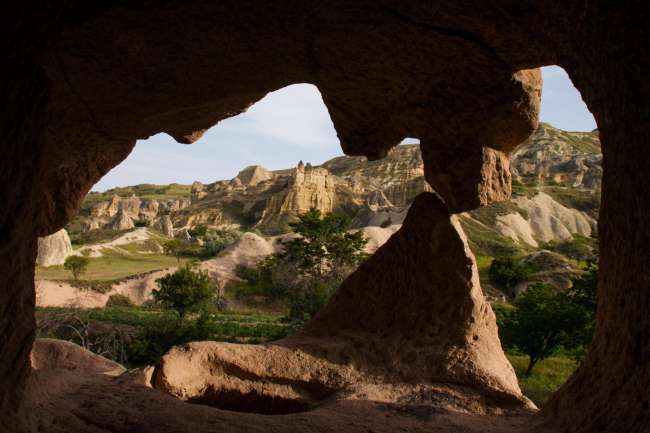
Izvještaji o putovanjima Turska
